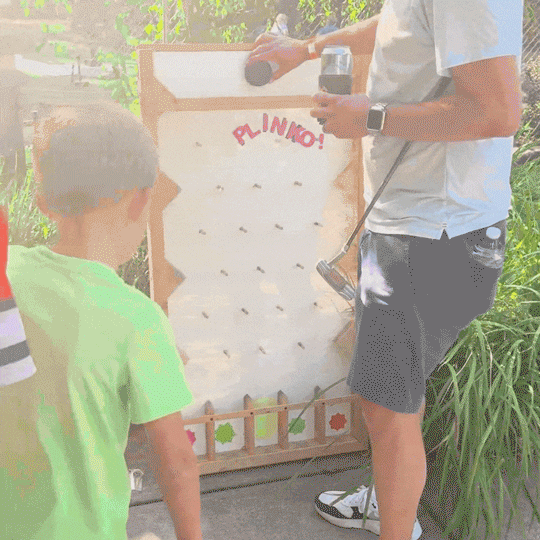Maybe you recently decided a charity golf tournament would be a great option to raise money for your organization or a nonprofit you love. Or perhaps your nonprofit held a spring golf event that was rained out or was so successful you want to add a second event this fall.
Either way, you may be asking yourself: Is it too late in the year to plan a golf event? Absolutely not! With the right tools in place, a successful, lucrative golf fundraiser can be planned in just a few months. Here’s why now is a great time to plan a fall golf event and how to get started.
Fall is a fantastic time to hold a golf fundraiser for your organization or a cause you care about!
Tech Makes Prep & Planning Simple & Efficient
The right tech is key to quick-paced planning. An event management platform built just for golf lets you automate planning tasks and keeps everything organized so you can successfully plan a golf event with less lead time. Opt for a web-based software solution that keeps everything in one accessible place, making it easy to collaborate with your team and the golf facility staff. You’ll also want baked-in tools to handle golf-specific details, like hole assignments, scoring, handicaps, team pairings, and more.
With tech built specifically for golf events, you’ll avoid clunky workarounds for your CRM or standard ticketing software and the need to track down and manage siloed information so you can focus on attracting players and selling sponsorships.
PRO TIP:
Share access to your event management tech with your planning team and the golf facility so everyone is working with the same up-to-date information.
You Can Start Promoting THE Event Right Away
An event website is the promotional hub for your golf tournament. And since a website for your golf fundraiser can be built and launched in a matter of days, you can start promoting it right away!
An event website makes tournament promotion as simple as sharing a direct link to the site where golfers can register a team, buy add-ons, or make a donation, and sponsors can commit to your event as soon as they hear about it. Plus, moving promotion online means you can skip the time-consuming process of creating registration materials and processes, collecting addresses, mailing flyers, and waiting for people to call, email, or mail in their information. So not only does a website save you time, but you’ll also save hundreds of dollars in printing and postage costs.
With an event website, you can start promoting your fall golf tournament right away by sharing the link with potential golfers and sponsor.
PRO TIP:
Share the link on all your organization’s digital channels and ask your planning team, board members, volunteers, and supporters to do the same.
SAVE TONS OF TIME WITH AUTOMATED WORKFLOWS
Your event website should have online registration and secure payment processing built in. Online registration is truly a game-changer for busy event organizers, automating manual processes to save a ton of time. It eliminates the need for multiple platforms and spreadsheets, processing paper forms, manually sending receipts, cashing checks, and chasing down payments on the day of the tournament.
Instead, when someone registers or purchases a sponsorship, all pertinent information is collected and accessible in the software’s backend, and they automatically receive a payment receipt and registration confirmation. When it comes time to manage hole assignments, team pairings, handicaps, and other unique details of a golf event, each golfer’s information is right in the software, so there’s no need to bounce between platforms or worry about working with out-of-date information.
PRO TIP:
Offer a variety of price points for sponsor packages to attract the support of businesses of all sizes and budgets.
Fall is Great for Golf
Fall is an excellent time for golf events, with favorable weather, appealing course conditions, and lower, off-peak season facility costs. It’s a good idea to keep the shorter days that fall brings in mind when setting the tournament’s schedule, but that can easily be addressed by a shotgun start, a shorter nine-hole event, or even a putt putt tournament to maximize playable hours. If you’re located in a warm-weather location, you have even more of the year to work with and can even get a tournament on the books for November or December.
Pro Tip:
The staff at the host golf facility can help you determine the optimal start time for your fall golf event.
Fall can bring great course conditions, nice weather, and lower facility costs for a charity golf tournament.
a fast start is possible
Since you have a condensed planning timeline, you’ll want to get off to a fast start with planning to pick up some momentum. Here’s how and when to start:
in the next week:
Connect with GolfStatus
Form a planning team
Look at potential tournament dates
in the next two weeks:
Set a fundraising goal
Reach out to potential host golf facilities
Get a handle on revenue and expenses
in the next three weeks:
Finalize a date and sign a contract with the golf facility
Set team pricing
Build sponsorship packages and determine pricing
Launch your event website
in the next few months:
Market the tournament
Reach out to potential sponsors
Build in revenue enhancers
Stay organized
Don’t be afraid to ask for help!
Free Golf Tournament Fundraiser Checklist & Planning Timeline
Get a comprehensive checklist and detailed tournament planning timeline to keep you on task and on target.
resources are available to help
Don’t worry—tournament planning resources are available to get you off on the right foot and stay on track, even if you don’t know a thing about golf. Sample timelines, planning checklists, sponsorship packages, templates, and more can help take the guesswork out of planning, especially on a shorter timeline. When choosing an event management platform, be sure it’s supported by a knowledgeable, responsive client success team that knows the ins and outs of golf events and can respond to questions and resolve issues seven days a week.
The right tech—at no upfront cost!
GolfStatus’ golf event management tech is specifically designed to make golf tournament fundraisers easier than ever to plan, market, and execute. Our in-house client success team is made up of golf fundraising experts, Fundraising Specialists, and PGA Professionals, there to guide you every step of the way, from building your event website and creating sponsor packages to helping you select a tournament format and working with the golf facility. Nonprofits can qualify to use GofStatus’ tech—including a free event website and online registration—at no upfront cost. Click below to book a meeting to get started!



















































